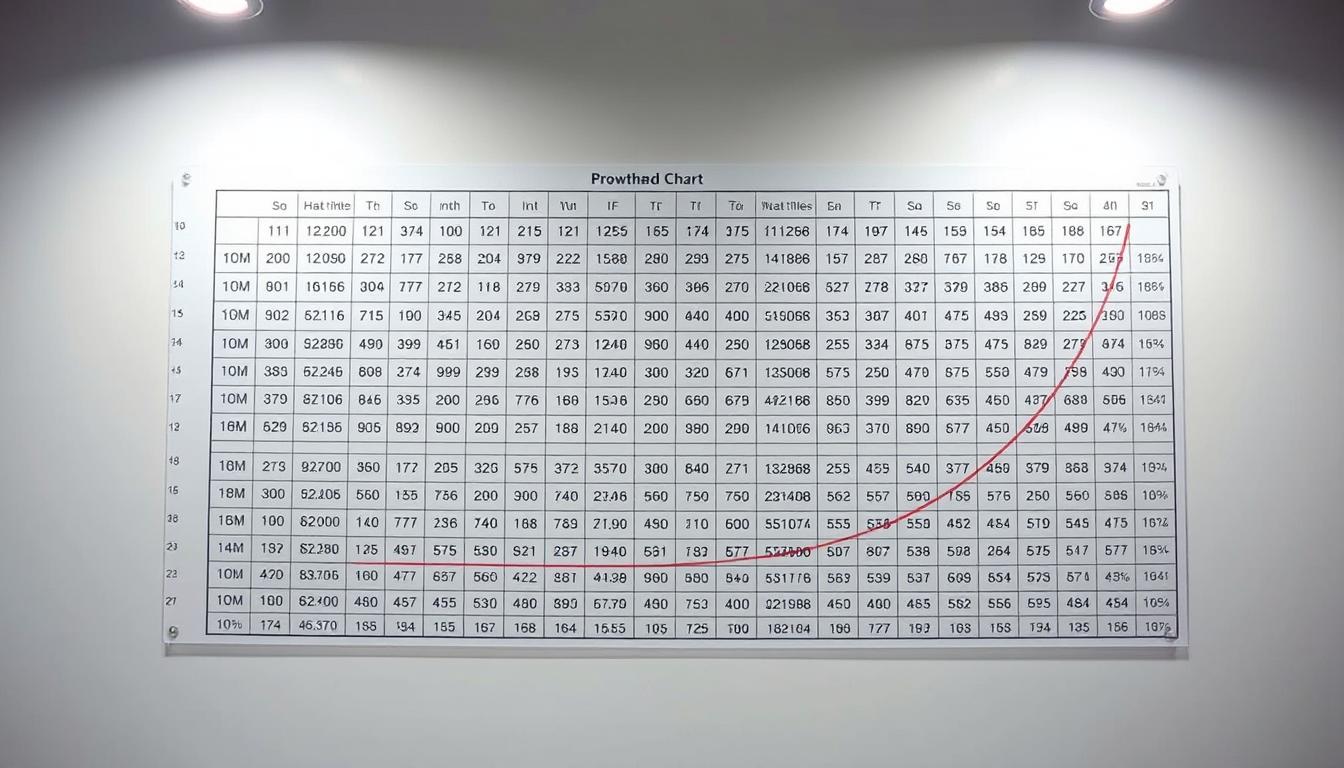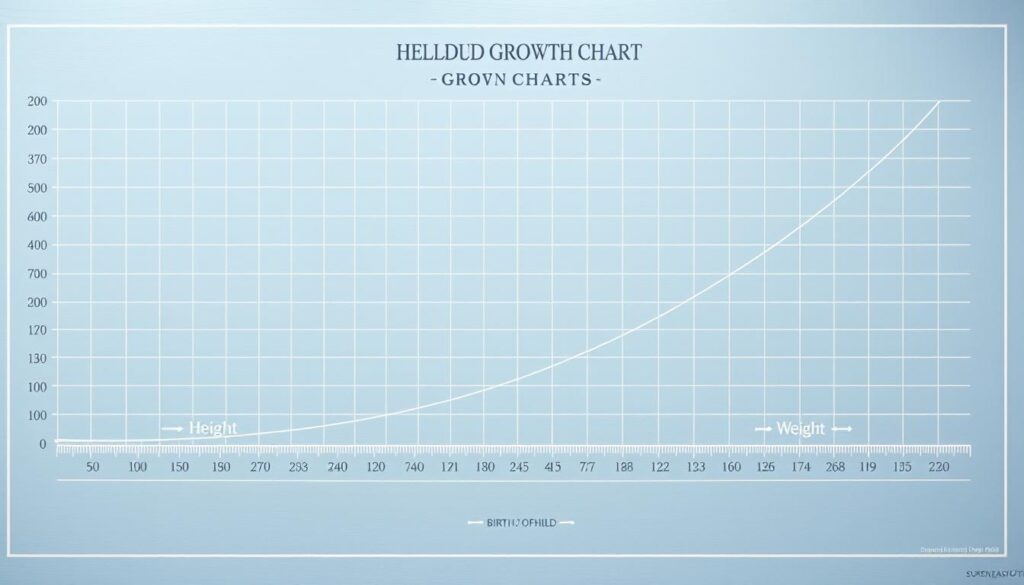“The greatest wealth is health.” – Virgil. This timeless quote emphasizes the importance of maintaining our overall well-being, especially in children. As parents, ensuring our kids grow and develop healthily is a top priority.
Monitoring a child’s growth is crucial in identifying potential health issues early on. One effective way to do this is by using a weight and height percentile calculator, which compares their measurements to standardized growth charts based on data from thousands of children.
By tracking a child’s height and weight in relation to their age and gender, parents can gain valuable insights into their overall health. This information can help identify any deviations from the norm, allowing for early intervention if necessary.
Key Takeaways
- Understand how a weight and height percentile calculator works.
- Learn why tracking growth is essential for identifying potential health issues.
- Discover how growth patterns can vary widely among healthy children.
- Find out what parents can learn from using these calculators.
- Explore how the information can help parents make informed decisions about their child’s health.
Understanding Growth Percentiles for Children
Understanding growth percentiles is essential for monitoring a child’s health and development trajectory. Growth percentiles are derived from growth charts, which are tools used by pediatricians to track a child’s growth over time. These charts are based on data from the Centers for Disease Control and Prevention (CDC).
What Are Growth Percentiles?
Percentiles show how a child’s weight, height, and head circumference compare to other children of the same age and sex. For instance, if a child’s weight is in the 20th percentile, they weigh more than 20 percent of children their age and sex. It’s normal for children to be in different percentiles for various measurements.
Why Tracking Growth Matters
Tracking growth is crucial for identifying potential health issues early. By monitoring a child’s growth pattern, healthcare providers can detect signs of growth disorders, nutritional problems, or underlying medical conditions. Consistent growth patterns are often more important than the specific percentile a child falls into. Pediatricians use growth charts to monitor development over time, providing insights into a child’s overall health.
As the CDC emphasizes, growth charts are essential for assessing a child’s growth relative to a reference population. By understanding growth percentiles, parents can better appreciate their child’s development and work with healthcare providers to address any concerns.
“Growth charts are a valuable tool for healthcare providers to assess a child’s growth and development.”
How to Use a Weight and Height Percentile Calculator for Kids
To effectively monitor a child’s growth, utilizing a weight and height percentile calculator is essential. This tool helps parents understand their child’s development in relation to other children of the same age and gender.
Required Measurements and Information
To use the weight and height percentile calculator, you’ll need to gather a few key pieces of information: your child’s birth date, the current measurement date, their gender, height, and weight. You can input these measurements in either metric or US customary units.
For accurate home measurements, ensure your child is undressed for weighing. For height, lay your child on a flat surface and measure from the top of their head to the bottom of their heel.
Step-by-Step Guide to Using the Calculator
First, enter your child’s birth date and the date of measurement. Then, select their gender and input their height and weight. The calculator will then provide their weight and height percentiles based on growth charts.
Understanding these percentiles helps you see how your child’s growth compares to national averages, giving you valuable insights into their development.
How Often to Take Measurements
The frequency of measurements depends on your child’s age. For infants, measurements are typically taken more frequently, aligning with well-child visit schedules. As your child grows, the frequency may decrease, but regular checks are still important to monitor their growth patterns over time.
Interpreting Your Child’s Growth Chart Results
Interpreting growth charts can seem complex, but it’s essential for understanding a child’s growth trajectory. Growth charts are a vital tool used by healthcare providers to track a child’s growth and development over time, providing insights into their overall health.
These charts plot a child’s weight, height, and body mass index (BMI) against a set of percentile curves, allowing parents and healthcare providers to understand how a child is growing relative to a reference population.
Understanding BMI Percentiles
BMI percentiles are a critical component of growth charts, helping to categorize children into different weight status categories. The BMI percentile is calculated by comparing a child’s BMI to that of other children of the same age and sex.
The categories are defined as follows:
- Underweight: Less than the 5th percentile
- Healthy Weight: 5th percentile to less than the 85th percentile
- Overweight: 85th percentile to less than the 95th percentile
- Obesity: 95th percentile or greater
- Severe Obesity: 120% of the 95th percentile or greater, or a BMI of 35 kg/m2 or greater
Weight and Height Percentile Categories
Weight and height percentiles provide additional information about a child’s growth. A child’s weight and height are plotted on separate charts, and the resulting percentiles indicate how their measurements compare to those of other children.
For instance, a child in the 50th percentile for height is average, while a child in the 75th percentile for weight is heavier than 75% of their peers.
When to Consult a Healthcare Provider
While growth charts are valuable tools, they are not diagnostic instruments. Parents should consult a healthcare provider if their child’s growth chart shows concerning trends, such as crossing multiple percentile lines or consistently falling below the 5th or above the 95th percentile.
A healthcare provider can assess these trends in the context of the child’s overall health and development, providing guidance and support as needed.
Monitoring Growth Patterns Over Time
Monitoring your child’sgrowth patternsover time is crucial for identifying potential health issues early on. By consistently tracking theirheightandweighton agrowth chart, you can gain valuable insights into their overall health and development.
Parents should watch for significant “drifting” in their child’s BMI-for-age percentile over time. For instance, a child moving from the 66th percentile at age 6 to the 77th percentile at age 8 could indicate a need for lifestyle adjustments. Maintaining a personal growth record, either digitally or physically, can help track these changes between healthcare visits.
Growth patterns change throughoutchildhood and adolescence, with expected growth spurts during certain periods. Understanding these changes can help parents interpret their child’s growth chart data more effectively. If you notice concerning trends, such as rapid weight gain or failure to grow at a expected rate, it’s essential to consult with a healthcare provider.
By staying informed and proactive, parents can help their children maintain a healthyweightandheighttrajectory, reducing the risk of obesity and other health issues. Regular monitoring and timely interventions can make a significant difference in a child’s long-term health outcomes.



